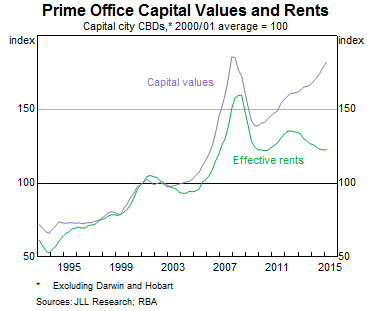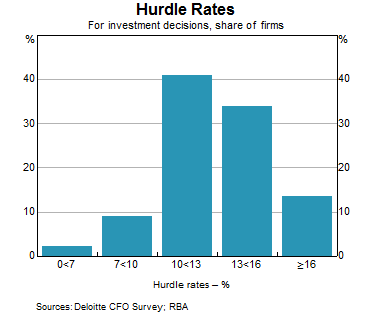Philip Lowe, RBA Deputy Governor spoke at the Corporate Finance Forum and spoke about two transitions.
The first is a domestic one – that is, the transition in the Australian economy following a period of extraordinarily strong growth in investment in the resources sector combined with record high commodity prices.
The second is a much more international one – and that is what seems to be a transition to a world in which global interest rates are lower, at least for an extended period, than we had previously become used to.
He explored the impact of low rates:
The first is the challenge that low interest rates pose to anyone who is seeking to fund future liabilities. Low interest rates mean that the present discounted value of these liabilities is higher than it once was. In turn, this means that more assets are needed to cover these liabilities. For anyone managing a long-tail insurance business or a defined benefit pension scheme, this is a major challenge. It is also a challenge for retirees and those planning for retirement.
The second issue is the effect of low interest rates on asset prices. Just as low interest rates increase the value of future liabilities, they increase the value of a given stream of future revenue from any asset. The result is higher asset prices. Another way of looking at this is that faced with low returns on risk-free assets, investors have sought other assets, and in so doing they have pushed up the prices of these assets. A good example of this is commercial property, where investors have been attracted by the relatively high yields, pushing prices up even though rents are declining.

A rise in asset prices is, of course, part of the monetary transmission mechanism. But developments here need to be watched very carefully. History is littered with examples of unsustainable asset price rises emerging on the back of perfectly justifiable increases in prices. In a number of cases, this has ended badly, especially if there is leverage involved. Also, we should not lose sight of the fact that interest rates and the returns generated from assets are ultimately linked to one another. So, interest rates may be structurally lower in part because the stream of future income generated from assets is also lower than in the past. This would have obvious implications for the sustainable level of many asset prices.
The third issue is the effect of low interest rates on firms’ investment decisions and hurdle rates of return. In today’s environment, it seems that many investors have, reluctantly, come to accept that they will earn lower yields on their existing assets. An open question though is whether the same acceptance of lower returns is flowing through to firms’ decisions about the creation of new assets – that is, their own investment plans.
The international evidence is that the hurdle rates of return that firms use for new investment are quite sticky and that they are not very responsive to movements in interest rates. There is less evidence of this issue in Australia, but a recent survey of CFOs by Deloitte hints at the same conclusion. The survey results suggest that hurdle rates of return on new investment are typically above 10 per cent and sometimes considerably so. The results also suggest that the average margin between the hurdle rate of return and the weighted-average cost of capital is about 3 percentage points. As part of the survey, firms were also asked how often they changed the hurdle rate, with the most frequent answer being ‘very rarely’. These findings are very similar to those reached through the Bank’s own extensive business liaison program.

